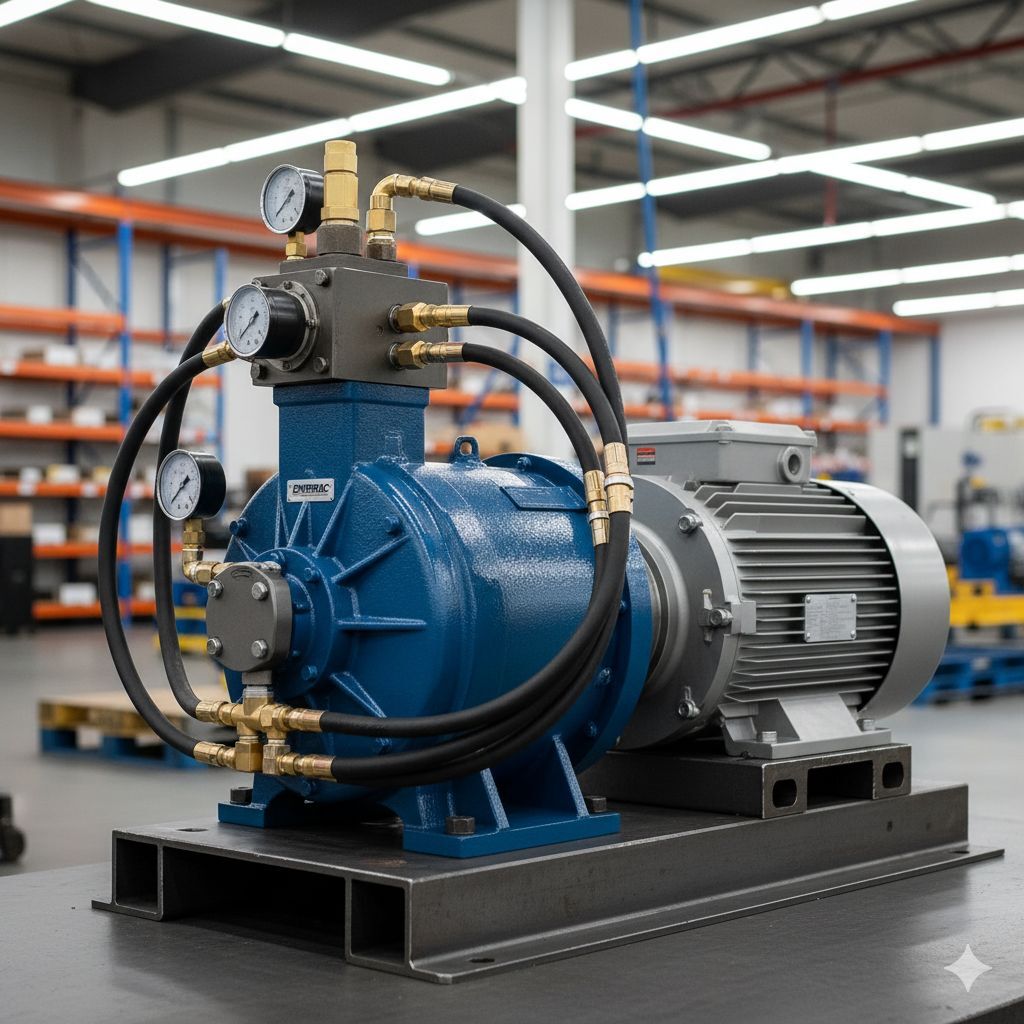How to Check a Hydraulic Pump: A Complete Manual
You must check your hydraulic pump for safety, efficiency, and dependability. Regardless of whether you are working on equipment such as mowers, tractors, or other serious equipment, knowing how to inspect a hydraulic pump will ensure you detect issues immediately before the pump fails and results in costly repairs. We will subsequently cover the process for tank testing a hydraulic pump, the tools you will need, and then the signs to look for to determine if the pump is still functioning properly or whether it has expired.
Hydraulic pumps are the heartbeat of any hydraulic system. It is the supplier of pressure to the components of your equipment. As time passes, pumps wear out from friction, contaminated fluids, or simply extended usage.

Benefits of Testing a Hydraulic Pump Routinely
- Detect leaks, pressure drops, and shocks before the pump fails.
- Identify potential permanent damage to cylinders, valves, pumps, and other hydraulic components.
- Extend the life expectancy of your entire hydraulic system.
- Prevent costly repairs caused by loss of hydraulic pressure, reduced efficiency, or downtime from component failure.
Tools You’ll Need
Before beginning the test, gather the following tools:
- Hydraulic pressure gauge
- Flow meter (optional but useful for accuracy)
- Thermometer for checking fluid temperature
- Protective gloves and eyewear
Step-by-Step Directions: Checking a Hydraulic Pump
| Step | Instructions |
|---|---|
| Step One: Safety | Shut off the equipment and place it on a level benchtop. Don appropriate personal protective equipment and purge the system of pressure before connecting tools. |
| Step Two: Review Fluid | Inspect the hydraulic fluid for contamination, foaming, or unusual color. Contaminated or low fluid can give false readings. Replace or top off the fluid before testing. |
| Step Three: Connect the Gauge | Attach the pressure gauge to the pump's pressure port. The gauge's purpose is to measure the pump’s ability to build and hold pressure. |
| Step Four: Start Engine and Warm Up | Start the engine and allow the hydraulic system to reach normal operating temperature. Cold oil can produce inaccurate test readings, so proper warm-up is important. |
| Step Five: Observe Pressure | Increase throttle to half or full and watch the gauge. A healthy pump will build and hold steady pressure without erratic drops. Low or unstable pressure may indicate wear, internal leakage, or component damage. |
| Step Six: Flow Test (Optional) | If you have a flow meter, measure the pump’s output. Even with acceptable pressure, low flow means the pump isn’t delivering enough volume and can affect system performance. |
| Step Seven: Listen for Noise & Vibration | Listen for whining, rattling, or cavitation (air in the system). Excessive noise or vibration often points to internal damage or air leaks. |
| Step Eight: Record & Compare | Record pressure and flow readings and compare them to manufacturer specs. If the pump doesn’t meet specifications, schedule service or consider replacement. |
Signals That Your Hydraulic Pump Needs Servicing
- Pressure won't reach recommended levels.
- The pump is warm under normal operating conditions.
- The hydraulic fluid is foamy or dirty.
- Weak or slow system operation.
- Leaks are visible on the pump housing or fittings.
Final Thoughts
Learning to test a hydraulic pump is more than fixing today's problems—it's preventing tomorrow's. A quick pressure and flow test will save you thousands of dollars in repairs and keep your equipment running at maximum capacity.
If your hydraulic pump is on the verge of needing to be replaced, get it done as soon as possible to prevent ruining the rest of your hydraulic system. It’s also good to highlight the possible causes that lead to replacement, such as internal leaks, excessive wear, cavitation, or damage to valves and cylinders. This way, you can easily connect to our replacement categories for pumps, valves, and other genuine hydraulic components, ensuring you find the right solution for your system.
Recent Posts
-
Hydraulic Pump and Motor: How They Work and How to Size Them
Hydraulic pumps and motors are the core components that generate motion, power, and torque in moder …Dec 9th 2025 -
How to Pump Up Hydraulic Lifters and How Long It Takes
Hydraulic lifters are a critical part of your engine’s valve train system, responsible for maintaini …Nov 3rd 2025 -
How to Check a Hydraulic Pump: A Complete Manual
You must check your hydraulic pump for safety, efficiency, and dependability. Regardless of whether …Oct 2nd 2025


